Bengaluru is legendary for its endless traffic jams, parking crunch, and narrow roads that struggle to handle the ever-increasing volume of vehicles. But apart from causing delays, it’s also emboldening petty crime—tempers are flaring, traffic regulations are being flouted, and the tired and frustrated are being taken advantage of. The city is growing increasingly hot-headed. There’s a looming sense of helplessness, but as the situation has worsened, dashboard cameras, or dash cams, are coming to the rescue.
“I don’t want to take any chances. I’d just like to have evidence of what’s going on,” said Ravinddhra, who installed his dash cam around two years ago. “Everyone’s slowly getting one. And in Bengaluru, there’s no one bad area. It’s all bad.”
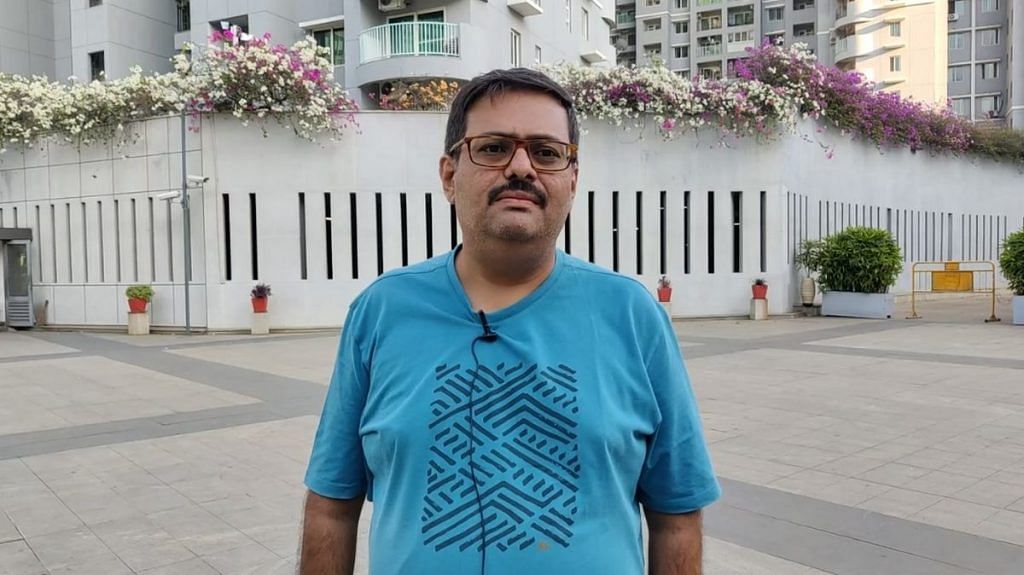
While Delhi and Mumbai have their own stereotypes about traffic brawls, Bengaluru has a different approach. In Delhi, drivers may stop, hurl Hindi abuses, and flaunt their family connections. In Mumbai, people just keep moving and don’t waste time arguing. In Bengaluru, instead of getting into an endless blame game, footage can be simply pulled out. Hot tempers are quickly cooled with cold, hard video evidence.
Even the city police are in on the brave new world of dash cams. They are actively using the footage to solve crimes.
It’s not always straightforward criminal extortion on Bengaluru’s roads. Anti-outsider sentiments sometimes seep into these confrontations.
Also Read: What led to Bengaluru water crisis? Unchecked concretisation coupled with lack of political will
Citizens-cops-cams—a new line of defence
Hemant, a 40-year-old engineer who relocated to Bengaluru from Mysore, has been using a dash cam since 2010. It’s proven useful not just for him, but also for fellow drivers in precarious situations.
In Bengaluru, as in most Indian cities, car drivers often face a bias against them during accidents with two-wheelers. The police and inevitable bystanders tend to sympathise with the person on the smaller vehicle, regardless of the situation. Dash cam footage, however, can provide a more clear-eyed perspective. “You know how it is in India,” Hemant said. “Whenever a bike is part of an accident, the car is considered at fault.”
He recently encountered just such a situation while driving through the outskirts of the city— a collision between a motorbike and a car just in front of his vehicle.
It’s often assault and extortion in the garb of road rage. I don’t see it as a mere violation
-Anucheth, Bengaluru joint commissioner of police (traffic)
“The two-wheeler was completely at fault,” said Hemant. But as it happened, the motorcyclist was also the injured party. Local residents who gathered at the spot immediately assumed that the car driver had caused the accident and started harassing him, clamouring for him to be held accountable.
Hemant was a mere witness, but he realised that he had recorded the incident on his dash cam. He presented the footage, which demonstrated that the bike had crashed into the car. The biker unfortunately died, but the outcome could have been even more tragic had the evidence not been presented. Thanks to the dash cam, Hemant was able to prove the car driver’s innocence.
The footage was shown to the car dealership as well, helping in securing the insurance payment. “I just had to step in. And I’m sure that man is very grateful,” said Hemant. “After that, I’ve made sure that all my cars have dash cams.”
This solution ties in well with the tech-savvy approach of Bengaluru’s traffic police, which is already using AI-powered cameras at major junctions. For other parts of the city, a dash cam can fill in the blanks.
“People often post dash cam footage on social media, tagging the Bengaluru traffic police account,” said Anucheth, Bengaluru’s joint commissioner of police (traffic) and a former chip engineer. “The flow of information is faster than ever, and it keeps us on our toes as well.”
According to Anucheth, there were 4,000 traffic accidents in Bengaluru last year, with a total of 914 fatalities. But collisions are not the only danger lurking on the roads.
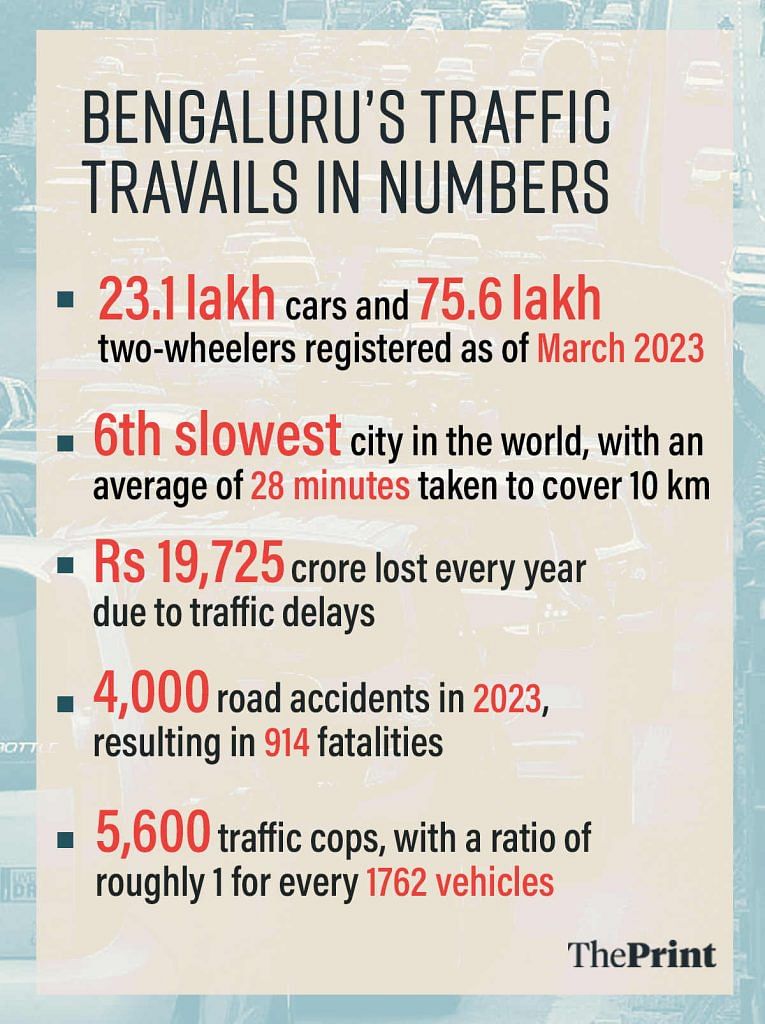
Pointing fingers to self-preservation
The wave of street extortion rackets has grown so much that it now ‘takes a village’ to keep people safe. Social media vigilante groups are keeping an eye. Dash cams are now the one-stop solution for all things bad in Bengaluru.
ThirdEye (@3rdEyeDude) is the X handle of one prominent anonymous watchdog. He shares a constant stream of videos each day—bikers attempting wheelies, drivers trying to evade the AI-powered cameras, and the reckless few who drive in the wrong direction on the outer ring road. There are dramatic altercations, as well as minor violations. All have been captured through dash cams.
This handle has become a valuable resource, from recommending which dash cam model to buy to outing traffic offenders with number plates, dates, and time stamps in full view. For instance, one couple on a two-wheeler allegedly tried to evade AI traffic cameras, but they could not outsmart the dashcam on their trail. “Will this person with 3k pending traffic violations get arrested or penalised?” ThirdEye tweeted.
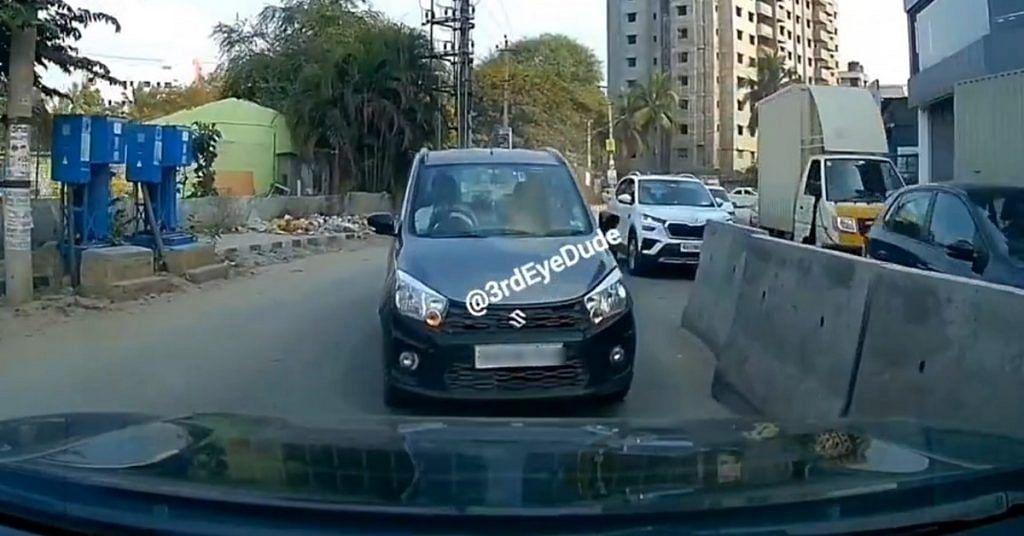
However, not all dash cam users are on a quest to expose offenders. Hemant, for instance, claimed he has captured numerous violation videos on his front and rear dash cams, but resists the temptation to share these on social media.
“If I have to share videos of traffic laws being broken, I have many,” he said. “But once you start posting on social media, pointing fingers at others, there will be 10 that point back at you,” he said.
For many, social media is a vehicle to express fury—but for Bengaluru citizens, the roads are becoming an outlet too. The rising temperatures and and gridlock-induced frustration are taking a toll.
“It’s so hot in Bengaluru now. Just having to sit in traffic jams for so long, your brain gets fried,” says Shishir, a product manager at Standard Chartered Bank. Originally from Lucknow, he’s been in Bengaluru now for nearly two decades.
If there’s an accident, how do you prove you’re innocent? It’s not your mistake, but you can’t depend on eyewitnesses. There are instances of people being beaten black and blue… I felt like the dash-cam was the most unbiased way to prove yourself
-Shishir, Bengaluru resident
Bengaluru ranked as the world’s sixth slowest city in 2023, a move up from the previous year, when it was second to London, according to TomTom, an Amsterdam-based location technology company. It takes an estimated 28 minutes and 10 seconds to cover a distance of 10 kilometres in the city. And the city reportedly loses Rs 19,725 crore per year due to traffic-related factors.
Such are the snarls that Shishir always factors in an extra hour of travel time compared to Google Maps’ estimates. But all the time spent around other annoyed commuters, bumper to bumper, has also taught him the value of caution. One of the first things he did when he bought a Grand Vitara last year was to install a dash cam.
For commuters like him, dash cams aren’t just a solution to crime. They also serve as a self-preservation tool, helping to prevent blame games, and reduce road rage.
“At the end of the day, a car is a box. If there’s an accident, how do you prove you’re innocent? It’s not your mistake, but you can’t depend on eyewitnesses. There are instances of people being beaten black and blue and no one comes to see,” Shishir said. “I felt like the dash-cam was the most unbiased way to prove yourself.”
Ravinddhra attests to this too. He has installed dashcams in both his cars, one of which is driven by his 72-year-old father. He recounted an incident where an irate auto-rickshaw driver confronted his father with a barrage of profanities following a minor collision in heavy traffic. “My father is a very calm man, that’s the only reason the situation didn’t escalate,” says Ravinddhra. Again, the dash-cam smoothed things over.
But if frustration is a common consequence of Bengaluru’s nightmarish traffic, road rage has morphed into a much more sinister beast, according to JCP Anucheth. “It’s often assault and extortion in the garb of road rage. I don’t see it as a mere violation,” he said. “Traffic is a feeble excuse. People should plan their travel, and work on their anger management issues.”
Bengaluru finds itself confronting two distinct yet interconnected demons— genuine anger fuelled by traffic woes, and the rise of opportunistic criminal activity that feeds off the congested streets.
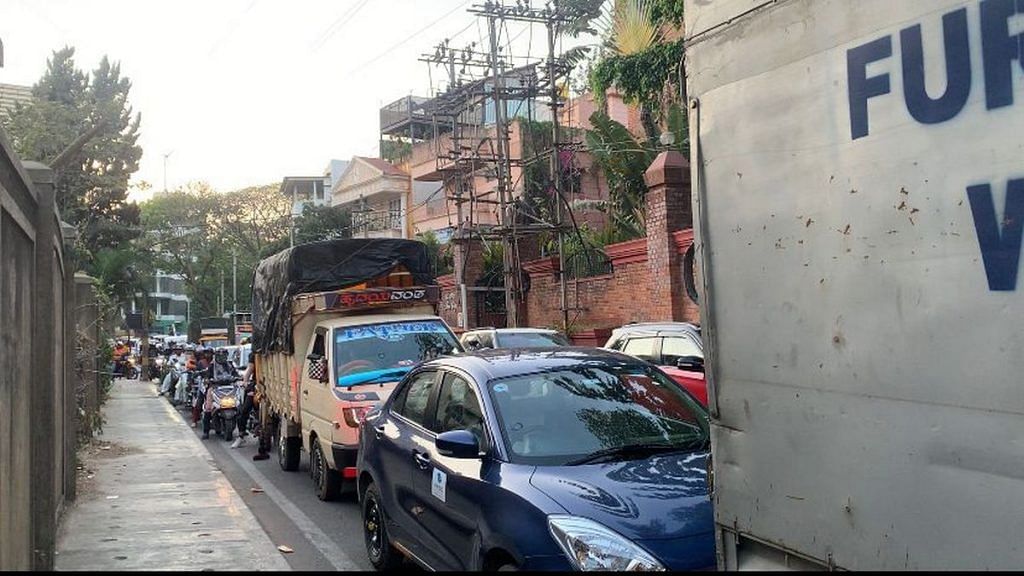
‘Outsiders’ beware
It’s not always straightforward criminal extortion on Bengaluru’s roads. Anti-outsider sentiments sometimes seep into these confrontations, and it can be hard to separate one from the other.
When software entrepreneur Charan Pal Singh was driving back from Pondicherry to Bengaluru with his colleagues a couple of months ago, he noticed their vehicle was being chased by a group of men on motorbikes. When Singh stopped, the bikers accused him of hitting their vehicle.
“They thought we were easy targets. It was a case of pure extortion. They were asking for money, they were drunk and just wanted to fight,” Singh said. When he demanded that the dispute be resolved at the Sarjapur police station, the bikers were unfazed. “They told us that they were fine with going to the police station because they had an in with the local politicians.”
Bengaluru hasn’t fully embraced its cosmopolitan character and there’s an insider-outsider divide.
Luckily for Singh and his colleagues, the matter was resolved quickly—the dash cam footage was the super saviour again. Once the police viewed the footage and saw there hadn’t been any sort of crash, the men confessed they were drunk. An FIR was filed and they were arrested. “The dash cam really helped us,” Singh said. “After this incident, I’m sure sales would have risen.”
Singh’s status as an outsider—he’s originally from Alwar and moved to Bengaluru in 2016—aggravated the bikers’ aggression, according to him. When he responded to their accusations in Hindi, their belligerence escalated. “They told me to speak in either Kannada or English,” he said. Furthermore, his car had a Telangana licence plate.
Instances of road rage have definitely increased over the years, and more around the IT corridors and newly developed areas like Whitefield and Sarjapur. Out of state vehicles are targeted
-Waseem Memon, founder of Drive without Borders
When Singh shared details of the incident on social media, he received a flurry of responses from people who claimed to have had similar experiences. Others expressed solidarity. It’s a major public interest issue, he said.
Bengaluru is home to a diverse population, with migrants constituting 42.5 per cent according to the 2011 census. Despite this, the city hasn’t fully embraced its cosmopolitan character and there’s an insider-outsider divide.
Avinash Bhat, a journalist-turned-corporate communications professional, has lived in Bengaluru for the past decade. He considers himself to be a local person, closely acquainted with how Bengaluru operates. But still, it’s not always easy, and there is a form of “profiling” that comes into play.
“The local people here are a minority. But a lot of people expect adjustment for them instead of it being the other way around,” Bhat said. “As soon as I break into fluent Kannada, they [potential extortionists] lose interest.”
Waseem Memon, a Bengaluru resident for 40 years, runs a 3,500-member-strong online community called Drive without Borders, as well as an NGO with the same name. He started it a decade ago, to “unite people across India to fight for one nation, one road tax.” Now that that’s been achieved, it’s become a platform for people to air their traffic and road related grievances, the majority of which come from Bengaluru.
“Instances of road rage have definitely increased over the years, and more around the IT corridors and newly developed areas like Whitefield and Sarjapur. Out of state vehicles are targeted,” he said.
Memon insists that Bengaluru’s reputation as a city that welcomes newcomers “with open arms” is intact, but acknowledges the need to exercise precautions. “People are now installing dash cams for their safety. They don’t want frivolous insurance claims against them. It’s evidence that can’t be refuted,” he said.
A godfatherly figure to those new to the city, Memon claims people call him for just about anything. “We’re a solution-based group,” he said, ready to assist with simple advice to legal action.
Also Read: Tattling to bosses of traffic violators won’t solve Bengaluru’s gridlock. It will hurt jobs
AI to ‘attitude’ adjustment
The tree-lined streets of the Bengaluru are at the heart of the city’s woes. They are under as much strain as the commuters. With an estimated population of 1.42 crore, Bengaluru has nearly as many vehicles as it has people—23.1 lakh cars and 75.6 lakh two-wheelers as of March 2023, with the number only growing.
The city is just not equipped to deal with this burden, said M Sreehari, traffic expert and advisor to the Karnataka government. Trained as a civil engineer, he has been working in traffic and civil infrastructure for over three decades and has seen the situation go from bad to worse
“The roads are narrow and full of parked vehicles. The footpath is very, very unscientific, so people are walking on the road. And parking on both sides of the road means that people only have the remaining area in which they drive,” he said.
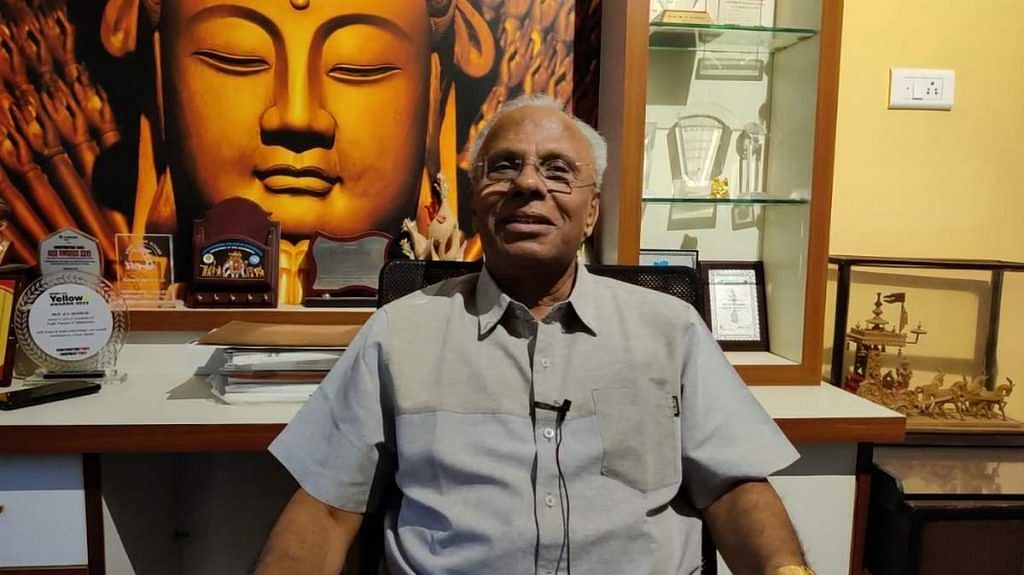
Maintaining order amidst this chaos is a challenge for the traffic police. There are 5,600 traffic personnel on the ground but they are spread thin, with about one cop for every 1,762 vehicles.
To bridge this gap, authorities are experimenting with AI-driven solutions. “AI is today’s buzzword. It’s our force multiplier. Whatever we lack in human resources, we can make up for by deploying AI,” Anucheth said.
These interventions include traffic signals powered by MODERATO, a Japanese technology used to create smart signals—the traffic signals change colour based on real-time traffic flow data. Additionally, the Indian-made ASTrAM (Actionable Intelligence for Sustainable Traffic Management) is an app that provides real-time data and alerts to traffic cops. “Going by our trials and our existing infrastructure, these apps can help to a large extent,” Anucheth said.
Traffic signals wrapped in what appear to be green garbage bags are peppered through the city—these are the integrated traffic signals that await inauguration. The city is also in the process of implementing AI-powered dash cams in police vehicles, and the Intelligent Traffic Management System addresses seven specific types of violations in a contactless manner.
However, Anucheth emphasises that technology can only “augment and assist” traffic police—it cannot entirely replace human manpower.
Even as technological solutions take root, experts also propose more prosaic solutions that tackle the fundamentals.
Srihari argued that a stricter driver’s licence process could address some of the traffic chaos, attributing part of the problem to poor driving skills. Such interventions, he said, might make a quicker impact than “loud, grandiose” solutions such as the recently announced plans to build tunnel roads.
For Sandheep Ravinddhra, the heart of the issue is attitude. He’s fed up with the brazen recklessness and entitlement on the road, recalling watching a motorcyclist doing “acrobatics” and then crashing into an auto-rickshaw. His main insight, though, is the futility of confrontations—they only breed more anger. “You just have to avoid conflict, avoid the escalation of rage. Regardless of whose fault it is, an argument will take place. And it might never end,” he said. His advice: Just let the dash cam do its job.
(Edited by Asavari Singh)




















